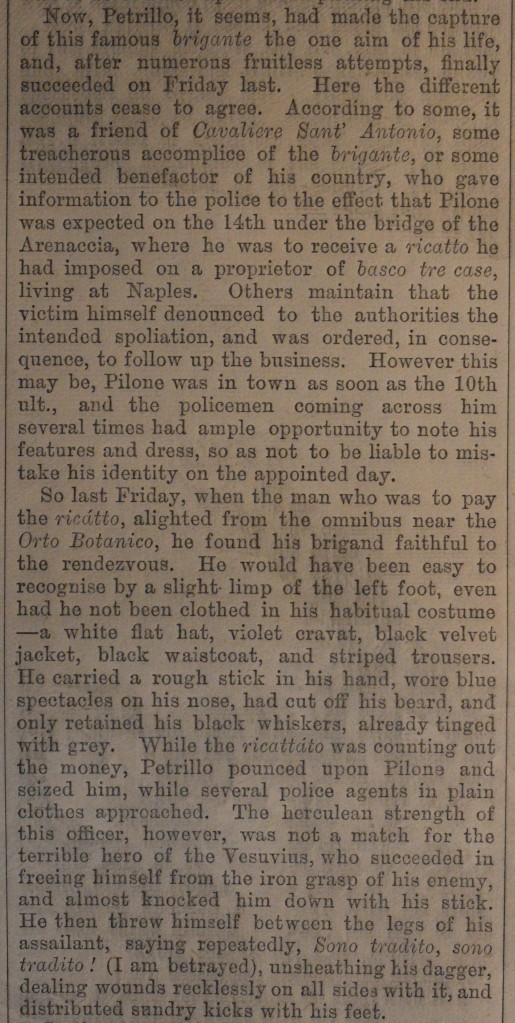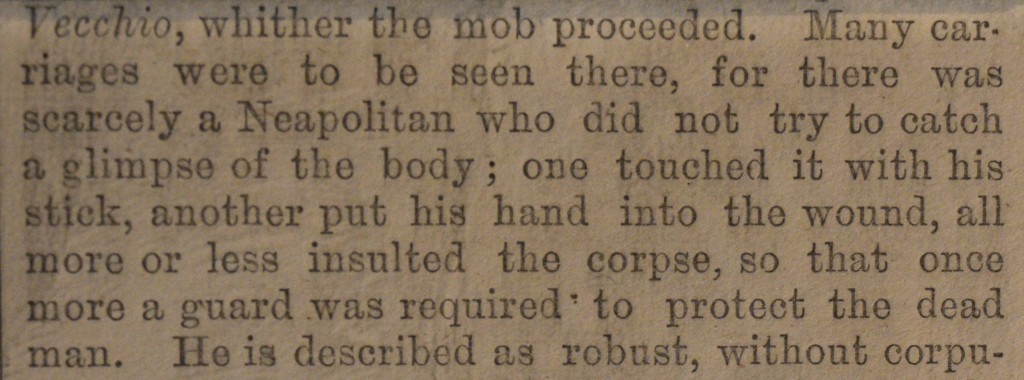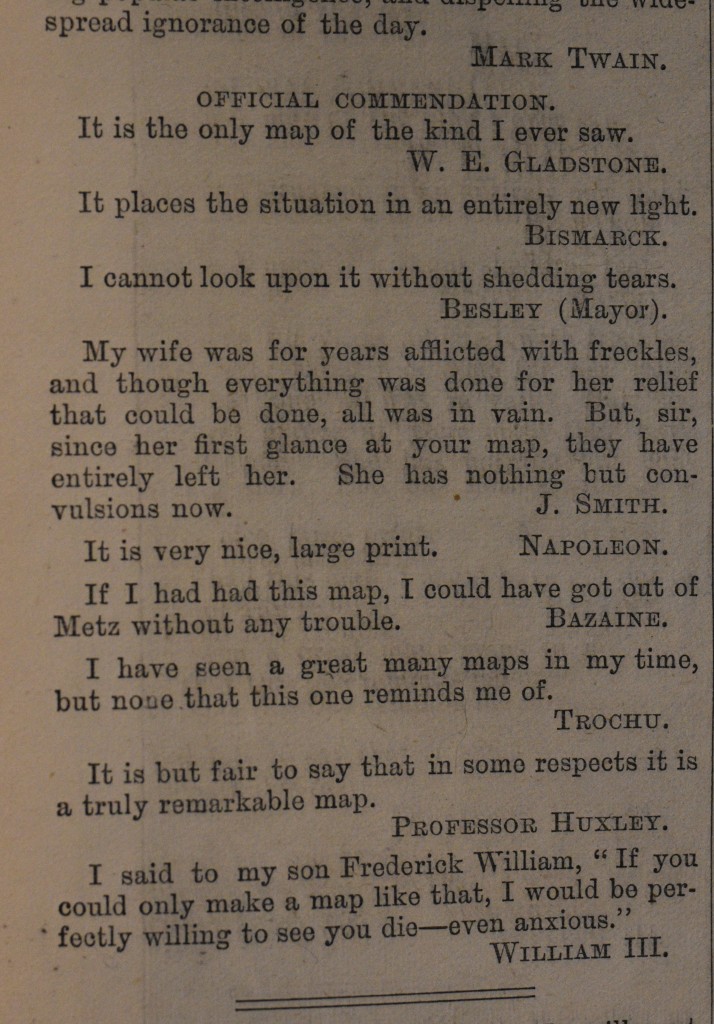The Day’s Doings was a short lived illustrated newspaper published (mostly) weekly in London between July 1870 and February 1872. It was also published in New York where it had a slightly longer run, changing into the broadly similar New York Illustrated Times

The late Nineteenth century was a competitive time for the newspaper industry and The Days’ Doings was published in a crowded field with other titles such as The Illustrated London News, The Graphic and The Penny Illustrated Times amongst others. Published by W.D. Waller in London, it appears that Waller was a pseudonym of Frank Leslie, an engraver who was born Henry Carter in Ipswich, March 1821 and emigrated to the USA in 1848 where , after a short time engraving for PT Barnum he became a publisher in his own right of titles such as Frank Leslies Illustrated Newspaper. https://en.wikipedia.org/wiki/Frank_Leslie
The Days’ Doings tended to be at the ‘racier’ end of the market and eventually folded following a court case held at Bow Street initiated at the request of The Society for the Suppression of Vice who alleged that the paper had published obscene matter and illustrations. Similar controversy was attached to the New York edition which was attacked for advertising abortefactants and homosexual literature
Starting with some enforced free time courtesy of the second nationwide Coronavirus Lockdown in November 2020 we thought we would share some stories from issues on their 150th anniversary date.

The Arrest of the Notorious Brigand Pilone, Near Naples. The story behind the cover illustration is on page two of this issue of The Days’ Doings published on November 5th 1870. It tells of the capture and death of Pilone, a “celebrated capo-brigante” who had been “the terror of the country surrounding Mount Vesuvius”. Born in 1825 as Antonio Cozzolino in the small town of Torre Annunziata near Naples he followed the trade of his father as a stone cutter until he entered the Neopolitan Army at the age of 21 where he learned the skills that would help him thrive as a brigand.

The wikipedia page for Pilone https://it.wikipedia.org/wiki/Antonio_Cozzolino provides a much more balanced biography of the man “considered by many historians to be the last of the great brigands” and gives some detail about his military service supporting the Bourbon army against the likes of Garibaldi in the numerous conflicts that eventually led to the unification of Italy (Risorgimento) . The Days’ Doings, in keeping with it’s editorial policy, gave the reader a much more sensationalist rendering of his life and times. The article draws on popular cultural references such as Les Miserables by Victor Hugo, published just 9 years previously in 1862 in its pen portrait of one of the police officers involved in the ambush and death of Pilone. “Among the officers employed in tracking him was a certain Petrillo, who reminds me forcibly of the sergeant de police bent on taking Jean Valjean”. (presumably Inspector Javert)
“This man seems to have taken up his profession from vocation, and to exercise it artistically. He possesses the feu sacré, the disinterestedness, the indefatigable zeal of the man who is determined upon accomplishing his end”.

Petriillo achieved his goal on October the 14th 1870. “Sono tradito, sono tradito!” Pilone had apparently been moving fairly freely around the suburbs and areas around Naples since early September whilst being observed by the authorities who were now keen to be rid of Piloni. The report notes that “He would have been easy to recognise by a slight limp of the left foot, even had he not been clothed in his habitual costume – a white flat hat, violet cravat, black velvet jacket, black waistcoat, and striped trousers. He carried a rough stick in his hand, wore blue spectacles on his nose, had cut off his beard, and only retained his black whiskers, already tinged with grey”. As Piloni was attending an arranged meeting to collect a blackmail payment (ricatto) which may have been a set up by the police, he was apprehended by Petrillo, assisted by several colleagues (15 policeman laid in wait according to Gabriele Scarpa in The Last Brigand of the South, History of the Pilone band). Piloni received a fatal stab wound to his chest during the melee that followed and died.
His corpse “was laid on a bier and carried in triumph to the questura (police station). All the town rushed out to see il terrore della montagna, and all that day and the next following people continued assembling before the Palazza San Giacomo: it became necessary to place sentinels at the gates to prevent the multitude from invading the house. A deputation of the lower classes actually came to Cavaliere Colmeyer, and requested that the dead body might be publicly exposed; but he wisely refused.. In the evening however, it was brought to the Campo Santo Vecchio (now known as Cemetery of the 366 Fossae), whither the mob proceeded.

There follows another 500 odd words detailing the contents of Piloni’s pockets before finishing with the slightly tabloidesque flourish that the photograph of himself that he had in his pocket had also been stabbed through the middle!
Mark Twain in The Days’ Doings
On page 11 of this edition of The Days’ Doings for November 5th 1870 appears a curious map which is explained as being the work of “our esteemed contributor, Mr. Mark Twain”. This humorous piece was written by Samuel Clemens using his pen name of Twain during the first half of his writing career, just 5 years after his first published short story, The Celebrated Jumping Frog of Calaveras County. In 1870 he was working as a writer and editor for The Buffalo Express in New York. It should be noted that the young Samuel Clemens became an apprentice printer at the age of 15 and earned his living as a typesetter as well as a contributing journalist/writer for the first part of his life.

” We have received from our esteemed contributor, Mr. Mark Twain, the above map, and we give his explanation of the same which is as follows:-
The idea of this map is not original with me, but is borrowed from from the Times, and other great metropolitan journals.
I claim no other merit for this production (if I may so call it) than that it is accurate. The main blemish of the newspaper maps, of which it is an imitation, is that in them more attention seems paid to artistic picturesqueness than geographical reliability.
Inasmuch as this is the first time I ever tried to draft and engrave a map, or attempt anything in this line of art at all, the commendations the work has received and the admiration it has excited among the people have been very grateful to my feelings. And it is touching to reflect that by far the most enthusiastic of these praises have come from people who know nothing at all about art.
By an important oversight I have engraved the map so that it reads wrong end first, except to left-handed people. I forgot that in order to make it right in print it should be drawn and engraved upside down. However, let the student who desires to contemplate the map stand on his head or hold it before a looking-glass. That will bring it right.”
The reader will comprehend at a glance that that piece of river with the “High Bridge” over it got left out to one side by reason of a slip of the graving-tool which rendered it necessary to change the entire course of the River Rhine or else spoil the map. After having spent two days in digging and gouging at the map, I would have changed the course of the Atlantic Ocean before I would have lost so much work.
I never had so much trouble with anything in my life as I did with this map. I had heaps of little fortifications scattered all around Paris, at first; but every now and then my instruments would slip, and fetch away whole miles of batteries, and leave the vicinity as clean as if the Prussians had been there.
The reader will find it well to frame this map for future reference so that it may aid in extending popular intelligence, and dispelling the wide-spread ignorance of the day. MARK TWAIN.”
There then follows a list of spurious commendations of the sort that that can still be found on page 32 of Private Eye.

One final observation, Frank Leslie, the presumed publisher of The Days’ Doings was by training an engraver and his publications were predicated upon the use of many large engravings created in short time frames. We assume that he appreciated the humour!
